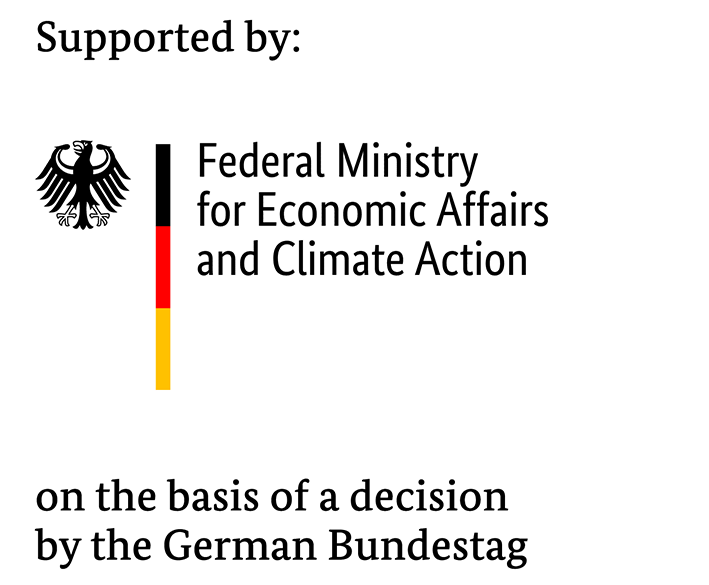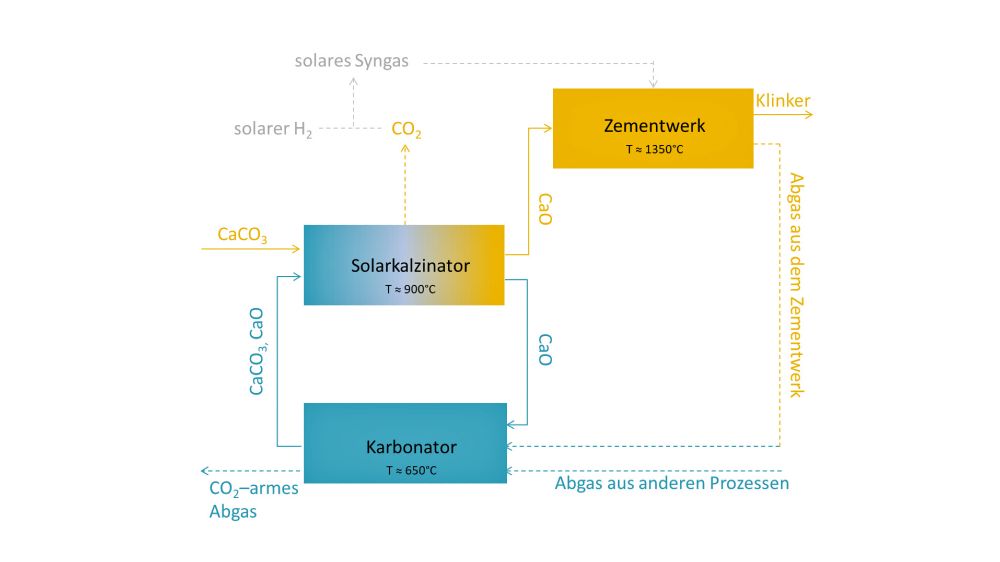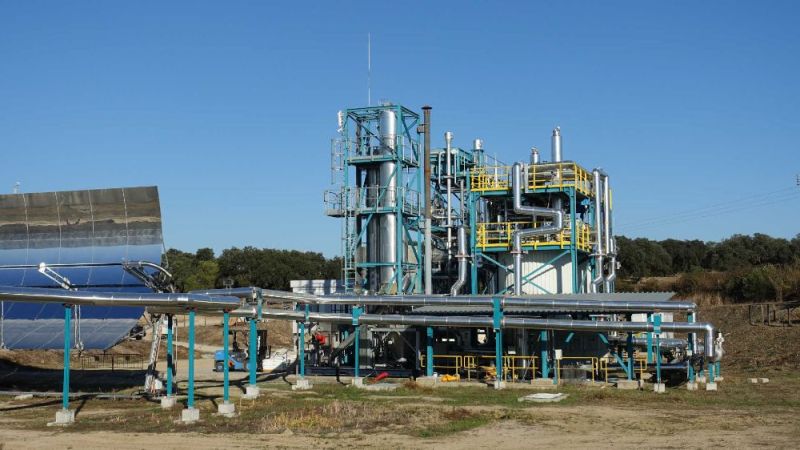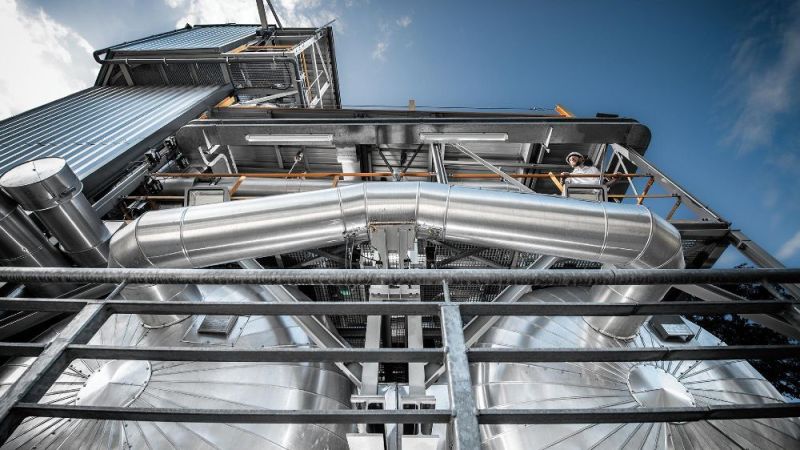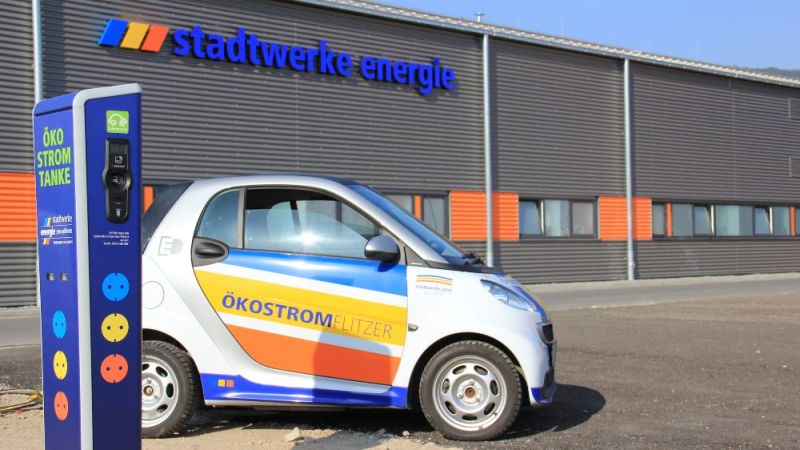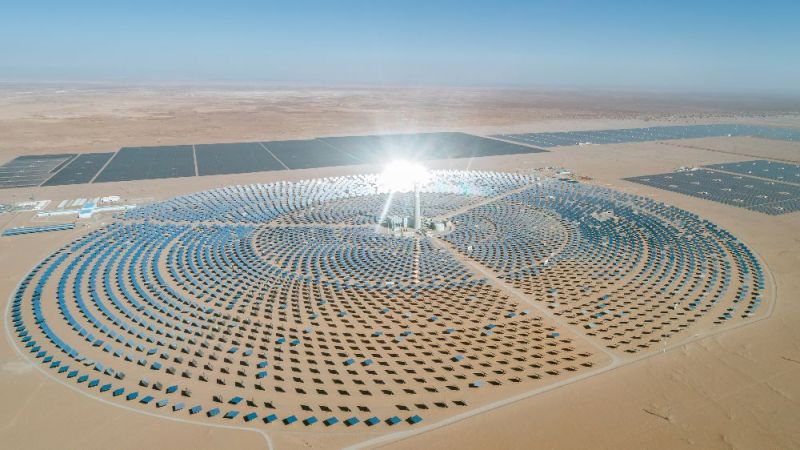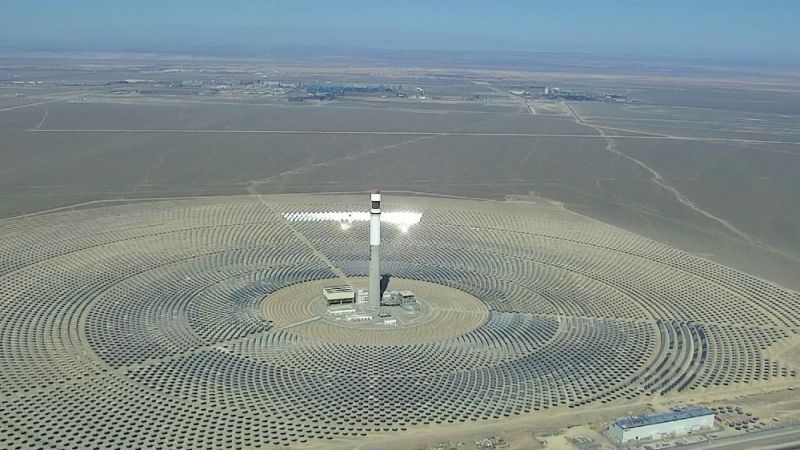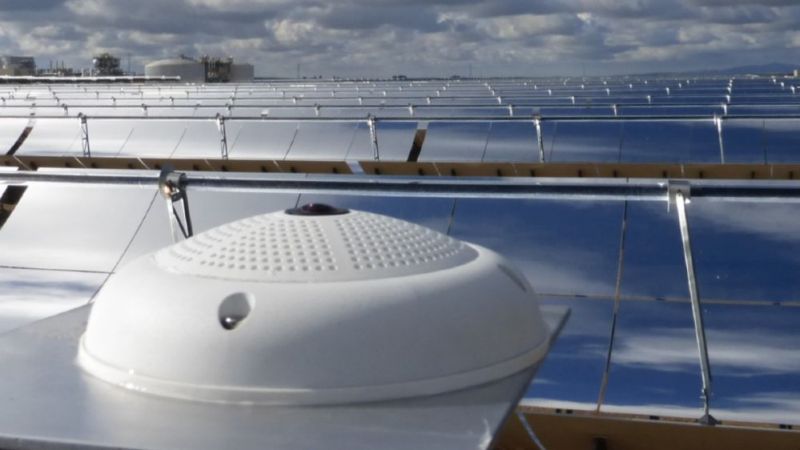Solar thermal power plants
Producing cement with solar energy
In the CemSol research project, a team of scientists is developing and demonstrating a solar-heated calcination plant to produce cement. This process produces carbon dioxide, which is first to be separated and then bound in a lime circuit.
In the production of cement, carbon dioxide (CO2) is dissolved out of limestone (calcium carbonate CaCO3) to produce lime (calcium oxide CaO). Lime is one of the basic materials from which cement is produced. The process takes place in a reactor, the calciner. In most cement plants currently in operation, the extracted CO2 escapes into the atmosphere. The entire process of cement production requires very high temperatures - over 1,000 degrees Celsius - and is one of the most energy- and emission-intensive processes. Normally, the required process heat is obtained by burning fossil fuels, which also produces CO2.
This is where the CemSol project comes in, short for "solar production of cement with integrated CO2 capture". The team of scientists is developing a process in which the rotary kiln is fired exclusively with solar energy. The heat of over 1,000 degrees Celsius generated by solar energy is produced in a solar thermal power plant. This reduces some of the CO2 emissions that are produced when burning fossil fuels. The CO2 released from the limestone can be reused or stored, for example as a raw material in the chemical industry. The aim is to investigate the technical and economic feasibility on an industrial scale.
Lime cycle stores CO2 emissions
Specifically, the researchers are planning a so-called lime cycle. This involves an initial endothermic (energy-consuming) process in which cement raw meal, which consists mainly of limestone, is calcined in a solar-powered rotary kiln. Subsequently, part of the lime produced undergoes an exothermic (heat-releasing) reverse reaction. In this process, CO2 from the exhaust gas of the cement plant is re-bound in limestone and the cycle is closed.
Developing and testing the calciner demonstration plant
An important milestone of the CemSol project is to develop and build a demonstration plant of the reactor. The scientists start by designing and configuring the solar-powered calciner and testing the components with regard to their thermal and mechanical stability. In addition, the efficiency of the plant is to be determined in trial operation. The aim is to use the results obtained for simulations of large plants on an industrial scale. (mm)

